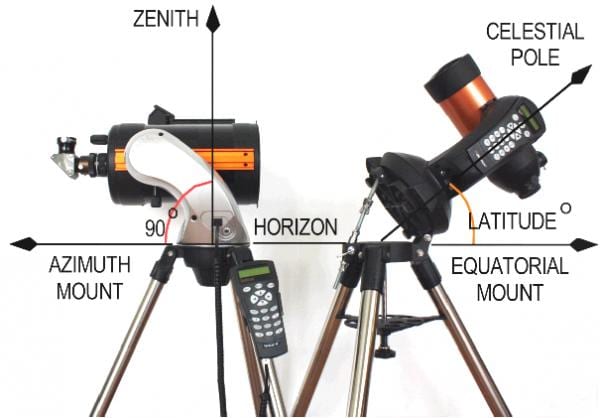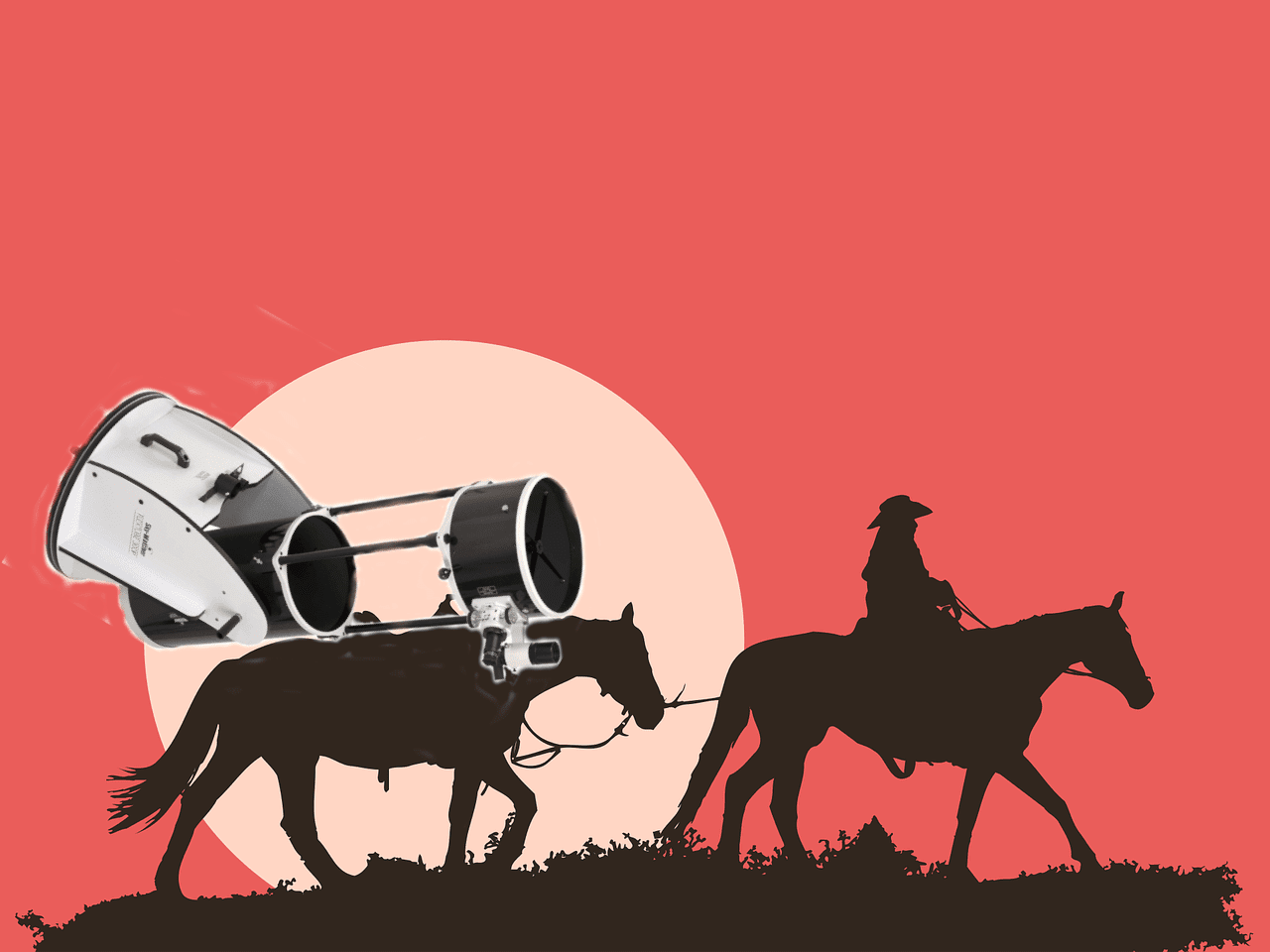Telescopes are very sensitive and need to be handled with care. Because of this, it’s crucial to observe the strict measures when moving this equipment from one point to another. This is further made a challenging task when dealing with a large telescope.
If this is an issue you’re experiencing, the question that must be ringing in your head is the steps to follow when looking to transport a large telescope. Doing this is crucial since there are many sensitive parts in your telescope that need to be handled with care. Therefore
Contents
How to travel with a big telescope
When transporting the telescope, it’s vital to carefully look after the mount, optical tube, accessories as well as cameras. It’s also essential to ensure that all the different components are pre-assembled to save yourself the time you would have otherwise spent assembling the telescope.
By now, you understand the safety steps to take to ensure your large telescope is safe even when transporting it. However, there’s still a lot more you need to know about this entire process, including where you need to package it and other crucial details.

Detailed Guide On How To Transport A Large Telescope
Moving around with a large telescope is no easy task due to the many sensitive optics required to handle your every move with care. Therefore, the first thing you should start by doing is finding a safe place where you can place your telescope to use while moving from one point to another. Once your telescope has been padded correctly, it can capably handle light bouncing around.
A good technique of ensuring your telescope is padded well is by covering it with a blanket. Consequently, buckle it to your vehicle’s back seat before you start your journey.
You can use this technique when transporting different models of large telescopes, including the Schmidt-Cassegrain telescopes. This is because such telescopes have a great shape and size to perfectly fit on the car chair.
If you don’t want to play around with your large telescope’s safety when transporting it, a hard case is the best solution. With this case, you can be confident that your telescope is safely secured in position. This case is big enough for you also to include other accessories inside. Some cases come integrated with wheels, and this is ideal, especially when transporting a large, bulky telescope.
Travel Abroad With Big Telescope
When you intend to carry a large telescope with you abroad, it’s best if you ship it rather than transporting it in an airplane. This is crucial since, unlike shipping, transporting a telescope by plane isn’t insured. Therefore, in case anything does happen to your telescope while transporting it through an airplane, you’ll have to bear the entire cost. This isn’t something you need to worry about when transporting your big telescope overseas using a ship.
In addition to having an insurance cover when being transported by ship, shippers handle your telescope a lot more gently compared to baggage handlers. This increases the risk of a delicate component in your telescope, and you end up incurring substantial losses.

transport your telescope by plane
If the only option you have is to transport your telescope by plane, you need to use the telescope’s original container instead of a case. It’s also best if not to see the telescope during your trip, so you should request to have it positioned in the opposite direction of the plane’s cargo doors. Doing this allows you to have peace of mind instead of constantly worrying that your telescope might get damaged despite the already implemented safety protocols.
Therefore, it’s clear that transporting a large telescope is a big challenge. However, it certainly is achievable if you optimize your telescope before transporting it. For example, you should consider using the EAGLE rather than an external computer and directly install it on your large telescope. While doing this, you’ll also don’t need a lot of items to transport, fewer cables, a lighter and smaller battery for powering your telescope.
#TIP*
You should also ensure all the pre-installed cables on your telescope are intact to avoid the possibility of them being disconnected while moving your telescope during use.
Steps To Follow When Transporting A Large Telescope
The steps you need to follow are the same regardless of your telescope’s model. Here’s a detailed guide on the steps you should follow when transporting your large telescope. For this illustration, we’ll be transporting the Celestron EdgeHD 9.25-inch optical tube.
- You should start by getting your Geoptik bag for the SC 9.25”, where your large telescope can fit perfectly. Make sure there’s a cozy strap inside this bag where you can fix your telescope plus an extra small bag to put your small accessories.
- Get a sturdy and firm case for transporting the Avalon-Instruments M-Uno mount, and the cables come already connected, and the EAGLE installed. To ensure the mount remains still when transporting your telescope, you’ll need to cut the filling sponge.
- Get your firm case where you’ll transport the Atik 16200 CCD camera that coms pre-installed with an EFW3 motorized filter wheel that has an off-axis guider with a Lodestar X2 camera guide and 750,8 mm filters.
- You also need a soft case that comes along with the Avalon-Instruments T-POD 130 tripod.
- Lastly, get a hard case where you should place your numerous accessories for transportation.

Confirm That All the Essential Components Are Fine
Once you get to your destination, you can go right ahead and unpack your large telescope from its safe package. You should then test it to confirm that all the essential components are working just fine. This includes checking the polar alignment, auto-guide corrections, telescope focus as well as mount alignment and tracking. See whether everything that the EAGLE controls is operating smoothly and go right ahead and record images using your large telescope.
But before you can confirm your telescope is fully functional, make sure to test its collimation from an optical bench. Doing this is vital to verify that your telescope is still collimated even after an entire trip. Attaining collimation was fairly close, and this was made possible by Bob’s knobs collimation screws that were installed on the Celestron EdgeHD 925. Therefore, collimation was successfully achieved after a couple of minutes.
These are the steps you should follow when using other large telescopes, such as the 200P Dobsonian, which features 8-inch reflectors that are relatively large. As a result, this makes the transportation of this telescope a lot more challenging due to the bulky and large reflectors. However, if you still are experiencing a hard time transporting the telescope, a viable solution would be getting a smaller 6-inch reflector. This reflector offers you a perfect compromise as it’s simpler to transport due to its smaller design and still gives excellent results.
Now You Are Ready
Transporting a large telescope is something that many people often find quite challenging as it’s bulky, cumbersome, and need to implement appropriate safety precautions. If you had no idea where to start when moving your telescope, reading through an in-depth guide has provided you with the solution.
Therefore, you can now go ahead and transport your large telescope after carefully packaging it. This allows you to quickly go ahead with your trip, even while driving. You also save a lot of time that would have been otherwise spent preparing to transport the telescope. Moreover, you get to spend more time using your telescope.


